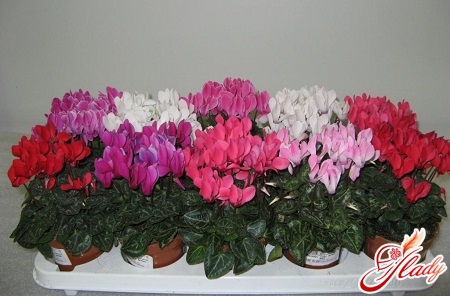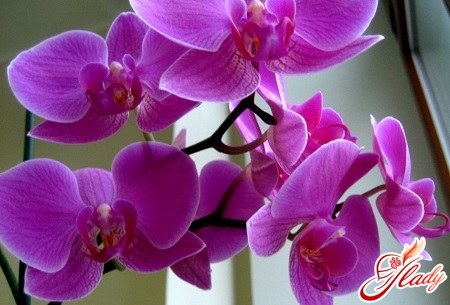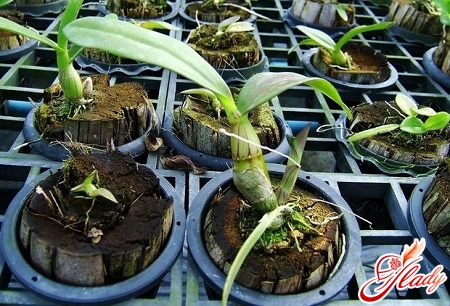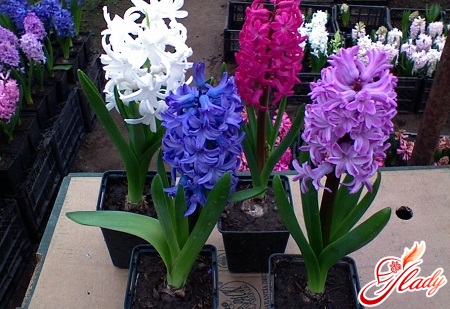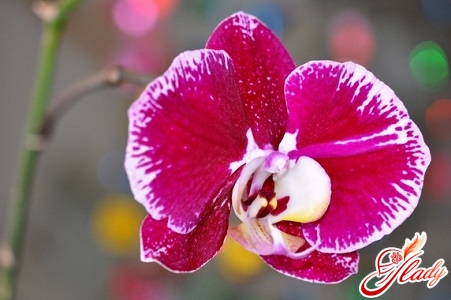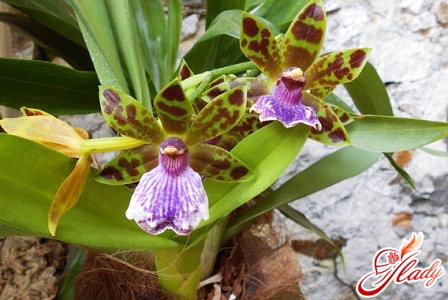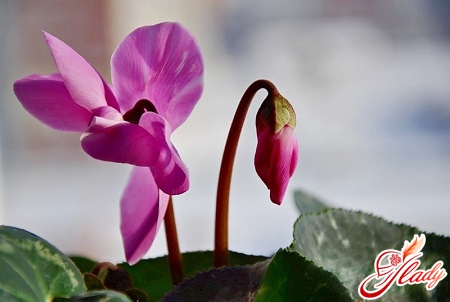 He really is a handsome man, this exotic one.a flower also called alpine violet or dryakva. Its delicate flowers are like butterflies fluttering over a green bush. Few people will remain indifferent to its graceful beauty and charm. But even fewer will dare to have a cyclamen at home, since the plant has a reputation as a capricious houseplant. It is believed that cyclamen is difficult to grow indoors. However, many gardeners grow it, constantly bloom and feel very good. Let's figure out what kind of flower this cyclamen is - is it difficult to care for at home or not?
He really is a handsome man, this exotic one.a flower also called alpine violet or dryakva. Its delicate flowers are like butterflies fluttering over a green bush. Few people will remain indifferent to its graceful beauty and charm. But even fewer will dare to have a cyclamen at home, since the plant has a reputation as a capricious houseplant. It is believed that cyclamen is difficult to grow indoors. However, many gardeners grow it, constantly bloom and feel very good. Let's figure out what kind of flower this cyclamen is - is it difficult to care for at home or not?
Such a different cyclamen
Cyclamen is a perennial bulbous plant ortuberous root plant. It lives for about twenty years, and blooms abundantly and for a long time: from autumn to spring. Cyclamen flowers have a variety of colors. They can be white, as well as all shades of pink, burgundy and purple. Cyclamen came to our homes from the gardens of Ancient Rome. There, these flowers were planted together with violets and daffodils. And their homeland is the Middle East and the Mediterranean. The most common varieties of the plant are called: Persian cyclamen (of eastern origin), as well as its western brother, European cyclamen. Both of these species are very decorative, but have their own distinctive features. European cyclamen is an evergreen tuberous plant with small round-heart-shaped leaves (2-4 cm in diameter). They are dark red below and dark green with a silvery pattern above. The flowers of the European cyclamen are also not very large - up to 2 cm in length, pink with a pleasant smell. The tubers of this type of cyclamen are spherical or flattened, with roots and daughter tubers. After flowering, the European cyclamen does not shed its leaves and retains a decorative appearance. Persian cyclamen is a plant from 15 to 30 cm in height. This type of cyclamen has large heart-shaped leaves (up to 14 cm in diameter). The leaf is green below, and has a silvery-gray pattern on top. The flowers of this species reach about five centimeters in diameter. They are very fragrant, with oblong petals curled back. This species is distinguished by a variety of petal colors. It has flowers from pink to pale purple and white with purple spots at the base. Persian cyclamen has a large, bumpy, spherical tuber with roots. After flowering, the Persian cyclamen goes into a dormant state and sheds its leaves. Contrary to popular belief, home cyclamen is not so capricious. Of course, there are requirements for growing this indoor plant. Cyclamen care is not limited to proper and timely watering. But the handsome cyclamen that blooms in the cold winter is worth your attention and your time.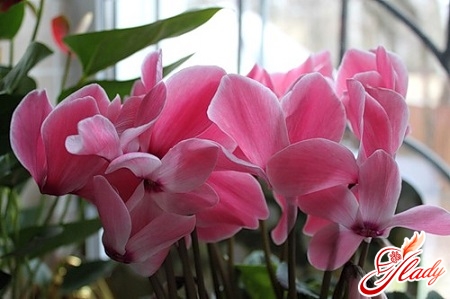
Selection and landing
First of all, you need to choose the right flower.If you decide to buy a cyclamen in a flower shop, then when choosing a plant, pay attention to the leaves and tuber. The tuber should be dense and without buds located at the top, and the leaves of the flower should not droop. It is best to buy cyclamens that bloom in winter in October (at the very beginning of flowering). Choose only a healthy plant with strong and green leaves and with many unblown buds. Also pay attention to the soil in which the cyclamen is planted. Most often, they are sold in a peat substrate. Such soil is completely unsuitable for the normal existence of this plant. In this case, cyclamen must be immediately transplanted into ordinary soil. When transplanting, you should carefully remove all peat lumps and rotten roots, and put drainage on the bottom of the pot. Check how deep the tuber is (in Persian cyclamen, it should rise above the ground by about a third). Choose a pot of the appropriate size (cyclamens do not like too large containers). There should be no more than two to three centimeters of space between the bulb and the wall of the pot. Therefore, a pot with a diameter of about eight centimeters is suitable for a one-year-old plant with a small corm. For a two- or three-year-old flower - fourteen to fifteen centimeters. Place the flower pot on a cool windowsill near the glass and try to protect the cyclamen from the dry air of the radiator. If you are planting indoor cyclamen with seeds, sow them in February. The seeds need darkness and humidity to germinate, so cover the pot with seeds with a saucer. After the first leaf and tuber appear, remove the saucer. Water the seedlings carefully (best with a pipette), moistening the soil near the tuber. In the summer, replant the grown plants, and then care for them in the same way as adult cyclamens. To prevent this indoor plant from getting sick and blooming on time, it is necessary to follow the care requirements.
General care rules
- Watering
There is no need to water cyclamens strictlyrecommendations of flower encyclopedias. For each plant, it is necessary to create an individual watering regime and water depending on the conditions in which it grows. The main thing is not to overdry or overwater the indoor cyclamen. Keep in mind that overdrying is not as bad as overwatering. Overwatering is fraught with the appearance of fungus gnats. But the saddest thing is that even one excessive watering can provoke root rot and the death of a plant such as cyclamen. Therefore, proper watering is one of the main conditions for growing this indoor flower.
- Lighting
Cyclamen loves light, but does not tolerate direct sunlight.sunlight. Indoor cyclamen feel best on the windowsills of northern windows. Plants growing on other windows require shading from the sun.
- Temperature
Cyclamen loves coolness. It reacts poorly to temperatures above fourteen degrees. The solution is to place the cyclamen as close to the window glass as possible in winter, and to move the pot with the plant further away in summer.
- Transplant and Reproduction
Every year (in summer) cyclamen is necessarytransplant into fresh soil, simultaneously carrying out a preventive inspection of the plant. Persian cyclamen is propagated only by seeds (sometimes by dividing the bulb). European cyclamen can be propagated by separating the lateral tubers.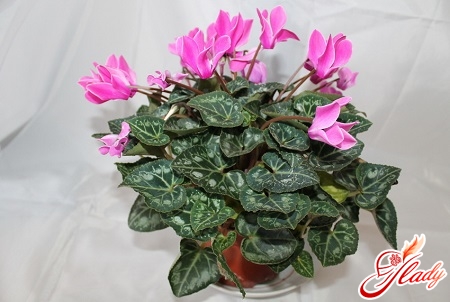
Special requirements
After the flowering of the Persian cyclamenenters a dormant phase (period). The leaves begin to turn yellow and fall off, and by the beginning of summer the tubers remain bare. At this time, the plant requires special care. With the appearance of the first yellow leaves, you need to reduce watering (but do not stop it completely). After the cyclamen has shed all its leaves, it must be placed in a dark and cool place (a pantry, a cellar, but not a refrigerator!). At this time, the roots of the flower remain alive, so you need to water the cyclamen occasionally (best from the tray). At the end of summer, cyclamen is transplanted into new soil and the pot with the flower is returned to its original place. And with the appearance of the first leaves, return to the previous watering regime. During the dormant period, Persian cyclamen can be propagated by dividing the tuber. This is done as follows. The tuber is removed from the pot, dried and cut into divisions (parts of the tuber with a bud and a root). The cuts are slightly dried and treated with an antiseptic (wood or activated carbon). After this, the divisions are planted in separate pots. Following these rules will provide the capricious beauty with comfortable conditions. But if not everything is well with the plant, the cyclamen will definitely let you know about it. The main thing is not to miss this signal and provide timely assistance to the flower.
Distress signals and ambulance
- Fast flowering. The reason - hot conditions, lack of nutrients. In this case, you need to move the cyclamen to a cool place and feed it.
- Rotting of peduncles and leaves. A possible cause is an excess of moisture in the soil, water entering the germ zone. First aid is to dry the soil and water the cyclamen less often.
- Withering and yellowing leaves. The reason is dry and hot air, bright sunlight, insufficient watering. In this case, it is necessary to pritenyat cyclamen, more often to water and moisten the air around the flower.
- Formation of small deformed leaves. A possible cause is the appearance of pests (cyclamen mite, thrips, aphids). Help - remove the affected leaves, lower the temperature and humidity in the room, spray cyclamen with insecticides.
And finally, let us make the following conclusion about the features of this houseplant.
As you can see, cyclamen is not that capricious.Yes, it is demanding (but the requirements are quite acceptable), yes, it is gentle (but is this a disadvantage?), but how good! How good is the handsome cyclamen with exotic butterfly flowers! It will certainly become a worthy decoration of your home, a subject of special pride and a reason for admiration and compliments to its owner. Good luck! We recommend reading:




